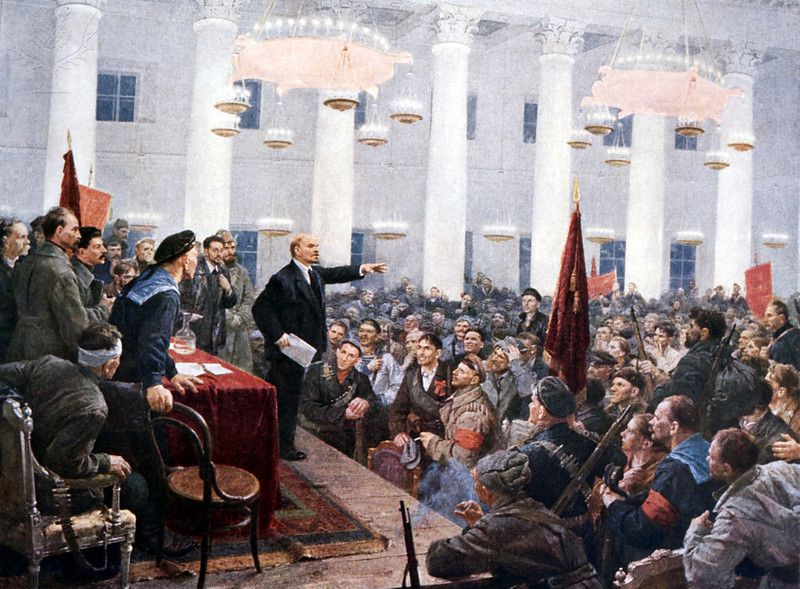Coda to “What is political party for Marxism? Democratic revolution and the contradiction of capital: On Mike Macnair’s Revolutionary Strategy (2008),” Platypus Review 71 (November 2014). Originally published in abridged form as a letter in Weekly Worker 1035 (November 20, 2014).
THE FRANKFURT SCHOOL OF THE 1930s recognized that the two historic constituencies of revolutionary politics, the masses and the party, had failed: the masses had led to fascism; and the party had led to Stalinism.
Trotsky had remarked, in his History of the Russian Revolution (1930), on the “interference of the masses in historical events:” “Whether this is good or bad we leave to the judgment of moralists.”
The most indubitable feature of a revolution is the direct interference of the masses in historical events. In ordinary times the state, be it monarchical or democratic, elevates itself above the nation, and history is made by specialists in that line of business – kings, ministers, bureaucrats, parliamentarians, journalists. But at those crucial moments when the old order becomes no longer endurable to the masses, they break over the barriers excluding them from the political arena, sweep aside their traditional representatives, and create by their own interference the initial groundwork for a new régime. Whether this is good or bad we leave to the judgment of moralists. We ourselves will take the facts as they are given by the objective course of development. The history of a revolution is for us first of all a history of the forcible entrance of the masses into the realm of rulership over their own destiny.1
But, as Lenin had written in What is to be Done? (1902), this was not a spontaneous development, but rather such apparent “spontaneity” could be explained by the prior history of the workers’ movement for socialism.2 The Russian Revolution had broken out on International Women’s Day, a working class holiday invented by Marxists in the socialist parties of the Second International.

Lenin giving a speech to the deputies of the Second Soviet Congress in the Smolny Palace in St. Petersburg during the Russian Revolution, October 1917.
Trotsky wrote, in “Stalinism and Bolshevism” (1937), that Bolshevism was “only a political tendency closely fused with the working class but not identical with it” and had “never identified itself with either the October Revolution or the Soviet state that issued from it.”
Bolshevism considered itself as one of the factors of history, its “Conscious” factor – a very important but not decisive one. We never sinned on historical subjectivism. We saw the decisive factor – on the existing basis of productive forces – in the class struggle, not only on a national scale but on an international scale.3
So, what was political party for Marxists such as Trotsky, Lenin and Luxemburg? It was one part of a differentiated whole of society and its political struggles, a political form that allowed for conscious participation in all the variety of arenas for politics that had developed in capitalism: parliaments, labor unions, mass strikes and their councils, and popular assemblies including workers’ councils for revolutionary governance. However, as a political form – as Andrew Feenberg has pointed out, in The Philosophy of Praxis (2014), about Lukács’s account of the articulation of theory and practice in Bolshevism in History and Class Consciousness (1923) and related writings – the party was not only or even especially a subject, but also, and perhaps most importantly, an object of political action.4 It fell to Trotsky, in the aftermath of the failure of Bolshevism, to attempt to sustain this Marxist concept of political form, against Stalinism’s liquidation of politics in the USSR and in the international Communist movement.
In this, Trotsky followed Lenin and Luxemburg as well as Marx and Engels. Trotsky followed Marx in regarding both Stalinism and fascism – as well as FDR New Deal-ism – as forms of the Bonapartist state. The death of the Left as a political force is signaled by its shying away from and anathematizing the political party for social transformation – revolution – not only in anarchism and “Left communist” notions of politics without parties, but most of all in the long and pervasive, if largely unrecognized, Stalinist inheritance that justifies the party only by identifying it with the people, which puts an end to politics, including political consciousness. What Dick Howard, following Marx, warns of the “anti-political” crisis of politics in capitalism expressed by Bonapartism, is this unmediated identification of politics with society, whether through the subordination of society or the liquidation of the party in the state, all in the name of quieting the inherent instability of politics, which society in its crisis of capitalism cannot afford.
For, as Marx recognized in the aftermath of failed revolution in 1848, Bonapartism was not only undemocratic liberalism, unbridled capitalism without political accountability to society, but was also the state run amok, dominating society, and with a great deal of popular support – for instance by what Marx called the “lumpenproletariat,” an example of the reduction of society to a politically undifferentiated mass, the very opposite of what Marx considered the necessary “class consciousness” of the proletariat. This is why Trotsky rightly regarded Stalinism as the “antithesis” of Bolshevism.
Stalinism’s suppression of politics in the Marxist sense was not only undemocratic but also popular, both in the USSR and internationally. It was borne of the same social and thus political crisis in capitalism. Stalinism was not the cause but was an effect of the failure of politics in capitalism. We still need to try to overcome this problem of capitalism by constituting it through the inherently dangerous game of party politics. | P
- Leon Trotsky, History of the Russian Revolution (1930) <http://www.marxists.org/archive/trotsky/1930/hrr/ch00.htm>. ↩
- Vladimir Ilyich Lenin, What is to be Done? (1902) https://www.marxists.org/archive/lenin/works/1901/witbd/. ↩
- Leon Trotsky, “Stalinism or Bolshevism” (1937) http://www.marxists.org/archive/trotsky/1937/08/stalinism.htm. ↩
- Andrew Feenberg, The Philosophy of Praxis: Marx, Lukács and the Frankfurt School (London, Verso: 2014) . ↩